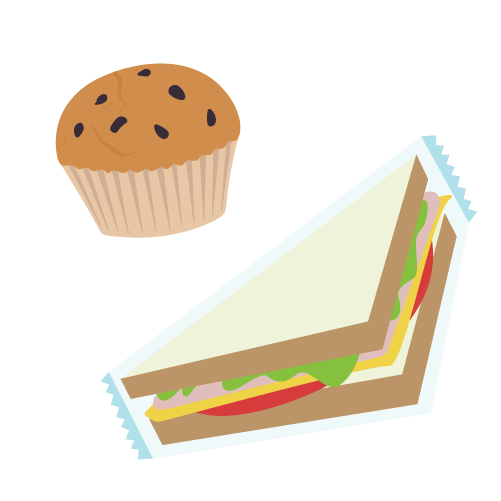Healthy eating policies
Food prices
 Food prices, as a policy action, refer to policies that lower the consumer cost of food and help make healthy eating choices easier, cheaper, and more accessible.
Food prices, as a policy action, refer to policies that lower the consumer cost of food and help make healthy eating choices easier, cheaper, and more accessible.- Price discounts and subsidies increase the consumption of fruits, vegetables, healthy snacks, and healthy beverages.
- Price increases and taxation of unhealthy foods reduce consumption of sugar-added foods and sugar-sweetened beverages.
- Government incentive interventions for low-income families, such as government funding to priority schools and individual cash transfers, increases fruit and vegetable consumption and decreases sugar-sweetened beverage consumption, especially among adolescents.
- Minimum price interventions – such as price baselines for unhealthy food options – are needed to modify behaviour.
- Food insecure individuals highlight the challenge of purchasing healthy food choices while stretching a limited food budget to feed their families.
- Future research and policy needs to reflect barriers and facilitators to accessing food subsidy programs across diverse population groups – particularly those most likely to under-utilize available programs.
This policy resource hub from the Alberta Policy Coalition for Chronic Disease Prevention promotes healthy eating policy action.
Health Canada’s National Nutritious Food Basket is a helpful tool used to monitor the cost and affordability of healthy eating.
Provincial/territorial healthy eating policy analysis
The degree of policy adoption is MEDIUM – most provinces and territories have policies related to food prices, including a nation-wide tax exemption for certain groceries and prepared food items. However, policies that regulate food prices specific to cancer prevention do not exist in any province/territory.
Examples of policies include the following:
- The federal Excise Tax Act applies federal, harmonized, and/or provincial/territorial sales tax to some unhealthy foods, such as soft drinks or fruit drinks with less than 25% natural fruit juice, candy, potato chips, and packaged processed foods.
- In Ontario, prepared foods sold for under $4.00 are exempt from HST.
- To deter individuals from choosing sugary beverages, Newfoundland and Labrador has implemented a sales tax on these products designed to disincentivize unhealthy foods and promote healthy food purchases.
- Food affordability has been addressed through several provincial policies:
- Ontario and Saskatchewan have outlined policies to make food more affordable for students.
- Quebec has a policy to assist low-income individuals gain better access to affordable food.
- British Columbia’s Employment and Assistance Regulation provides a nutrition supplement subsidy for cancer patients in employment assistance income.
- Ontario’s Community Food Program Donation Tax Credit for Farmers encourages farmers to donate to food banks through tax credits.
- Some provinces and territories have policies offering tax credits to farmers/operators (BC, ON, QC, NS, NU).

In Ontario, prepared foods sold for under $4 are exempt from HST
Municipal healthy eating policy analysis
The degree of policy adoption is MEDIUM – a few municipalities have outlined policies to make healthy food more accessible and affordable and several communities have outlined plans to increase food security.
Examples of policies include the following:
- Halifax’s Regional Municipal Plan requires food security be considered in community design.
- Longueuil’s Urban Agriculture Policy, Quebec City’s Urban Agriculture Action Plan, and Regina’s Community Plan promotes access to affordable, sustainable, and healthy food through local food production.
- Whitehorse’s Sustainability Plan highlights projects, programs and services that increase access to nutritious food for low-income residents.
- The London Plan seeks to increase access to healthy food for all residents and includes frameworks to ensure communities have access to healthy food within walking distance of their home.
- Community gardens are supported by policies in Edmonton, Whitehorse, Vancouver, Calgary, Moncton, London, Charlottetown, Regina, Winnipeg, Peel, Fredericton, Victoria.
![]() COVID-19
COVID-19
The pandemic has reversed two decades of improved nutrition and food security globally, with children being particularly vulnerable to negative impacts.1
![]() Opportunities for action
Opportunities for action
To increase healthy eating across provincial/territorial and municipal jurisdictions, policy direction could include:
- Expanding tax policies on unhealthy food and beverages to encourage healthier diet choices, noting tax policies must include equity considerations for low-income populations and those experiencing food insecurity.
- Implementing additional policies that govern food prices – including those that subsidize healthy food options – as they can make healthy eating options more accessible.
- World Bank. (2021). Food and Nutrition under the COVID-19 Crisis: Lessons for Protecting the Vulnerable and Facilitating Recovery. https://ieg.worldbankgroup.org/sites/default/files/Data/Topic/COVID19Lessons_foodandnutrition.pdf
